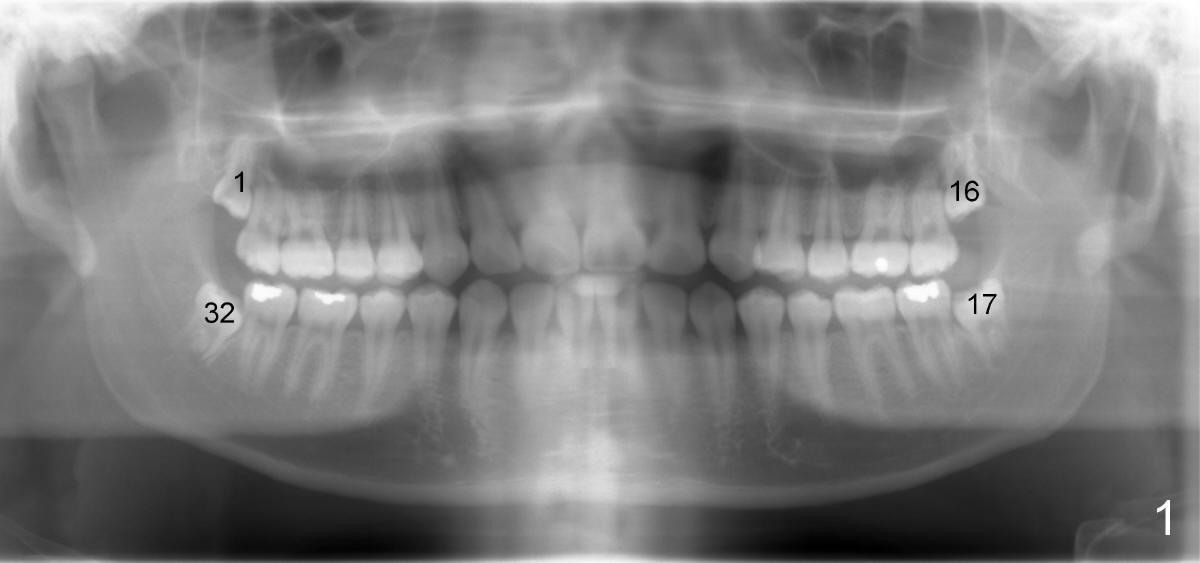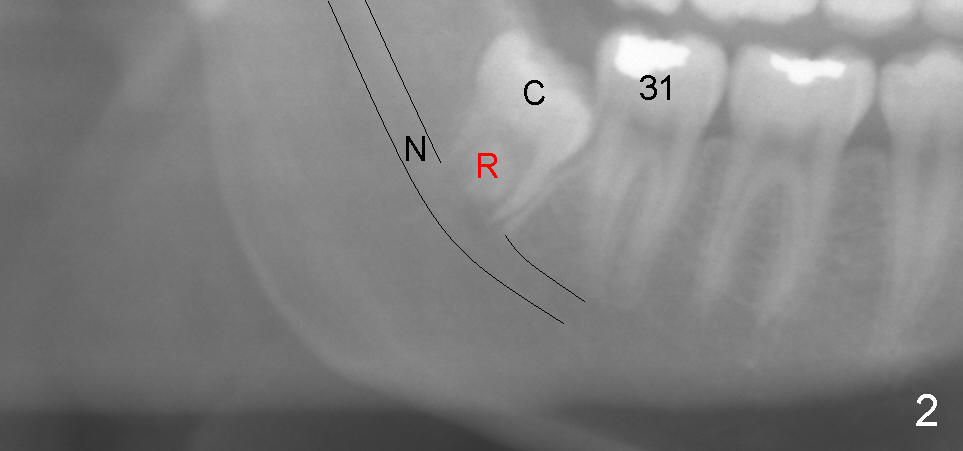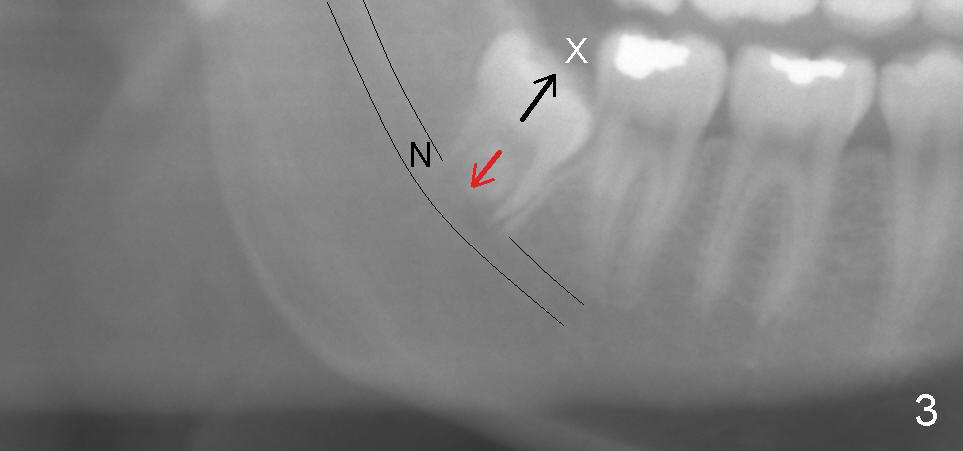


 |
|
 |
 |
Wisdom Teeth and Migraine
Sixteen-year-old Alex was brought by his mother to our office for consultation 3 months ago. Their concern is that Alex has migraine on the right side. It was treated by an expensive medicine. The mother wondered whether migraine is related to wisdom tooth impaction. When the mother was his age, she also had migraine, which was gone when wisdom teeth were removed.
We took X-ray for Alex. It shows that he has indeed 4 wisdom teeth: #1,16,17,32 in Fig.1. The two right wisdom teeth were removed (#1,32). Yesterday Alex returned for cleaning and exam. The wounds heal completely. Surprisingly, his migraine is gone. How?
Fig.2,3 are a magnification of Fig.1 around the tooth #32, the lower right wisdom tooth. They show that the crown (C) of the wisdom tooth is blocked (x) by the neighboring tooth, #31, whereas the root (R) of the wisdom tooth is immediately next to the nerve (N) underneath. When the root grows long, the tooth (crown) is growing into the mouth (Fig.3: black arrow) while the root remains in the same place. When the tooth is impacted, i.e., blocked by a neighboring tooth (x), the elongating root grows toward the nerve (red arrow). Therefore, the nerve gets pinched more and more. This nerve inside the lower jaw (inferior alveolar nerve) is a branch of the third division of the trigeminal nerve (#5 cranial nerve). Another branch of the third division of the trigeminal nerve is called the middle meningeal nerve, which goes into our brain. Any branch of a nerve is related to the other. When the inferior alveolar nerve is pinched by a growing root of the wisdom tooth, the damage and resulting pain is reflected to the other branch, i.e., the middle meningeal nerve, causing migraine. When the wisdom tooth is extracted, there is no more pinch upon the nerve inside the lower jaw, no more reflecting pain or migraine.
Xin Wei, DDS, PhD, MS 1st edition 12/22/2012, last revision 12/23/2012